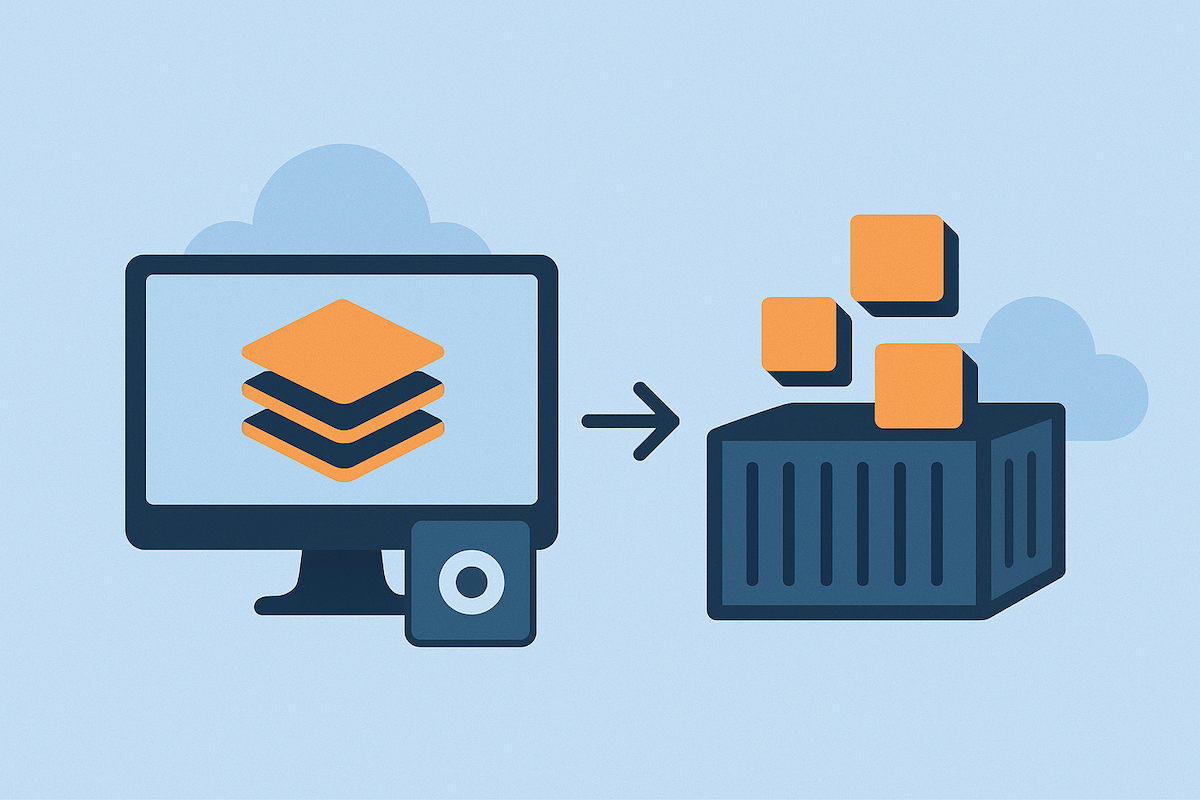Virtualization and Containerization: Technology Overview

Using virtualization and containerization in modern IT infrastructure
For most websites or online projects, it is not necessary to use an entire server, its performance will not be used to its full extent. However, renting or purchasing it is quite expensive. Therefore, providers instead offer a service of renting “virtual machines”, when several software computers are placed on one physical server, each of which is separately provided to the user with an isolated working environment.
What is virtualization: working principle and scope
What is a virtual machine in simple words? It is a regular computer that uses the processor, RAM and other server resources together with other machines at the same time. Programs that allow this to be done are called “hypervisors”. One of the most famous among them is VirtualBox, which is often used for testing, configuring applications, operating systems. However, there is a more modern version of virtualization - containerization. How do they differ and what are the advantages and disadvantages of each of them?Areas where containerization and virtualization are actively used today:
- cloud services;
- software development and testing;
- server optimization;
- backup, restore.
There are many ways in which containerization technology can be used. For example, you can rent a server and use it to run both a website and an application. Thanks to virtualization, there is no need to install and configure two separate machines.
What is containerization and how did it come about?
What is containerization in practice? This is a later version of virtualization, when an application or process is run in a separate isolated environment. The main nuance is that a “container” does not require a separate operating system, but instead uses the kernel of the host OS. The technology appeared around 2008 thanks to the Linux community, but it gained real popularity in 2013 after the creation of Docker. This is a platform that greatly simplifies and speeds up the deployment of the same containers, although now there are other systems such as Kubernetes, Podman, OpenShift.
Advantages and disadvantages of virtualization
The main advantage of virtualization is the ability to simultaneously use the resources of one machine among many users. Hundreds of websites, a corporate network, a separate online project can run on one physical server at the same time. And all of them will be isolated from each other, without affecting the performance of other applications. Additional advantages and disadvantages of virtualization technology:
Advantages and Disadvantages of Virtual Machines
| Advantages | Disadvantages |
|---|---|
| Complete isolation of systems — the operation of each does not affect the performance of others at all | Significant resource load, as each software node requires processor time and RAM |
| You can run multiple operating systems on a single server | Lower performance compared to a dedicated server and container |
| Flexible configuration and resource allocation | Difficulty scaling and updating when using many virtual machines simultaneously |
But the main advantage of using virtualization is a significant reduction in the cost of hosting services, because rental of a virtual server is possible, and it costs significantly less than a separate physical one.
Pros and cons of containerization
The key advantage of containerization is its higher performance compared to conventional virtualization. It is much easier to scale, you can update multiple containers at the same time, it takes a minimum of time. Also, this technology does not require multiple operating systems to be launched simultaneously, so server resources are used more optimally. At the same time, container management platforms allow you to easily transfer containers between servers or even distribute them between several physical machines.
But there are also disadvantages, for example:
- isolation is lower compared to virtualization, so it is conventionally believed that the level of security is not as high;
- OS compatibility is required (Windows containers are usually incompatible with Linux and vice versa);
- more complex architecture if a complex network of containers is used.
But it is impossible to say that virtualization is worse than containerization systems or vice versa. It all depends on the required functionality, on the tasks that the server performs, so each case should be considered separately by the system administrator. In some situations, virtualization will be preferable, in others - not. Moreover, quite often, containers are used inside virtual machines.
Areas of application of technologies
Virtualization is most often used for organizing corporate networks, private clouds, educational platforms, virtual desktops (VDI). Containerization is used in DevOps and CI/CD processes, cloud microservice applications, and in the operation of scalable web services. For example, this option is used by Google, Netflix, and Spotify.
So, virtualization and containerization are key technologies in modern IT infrastructure. Each of them has its own advantages and disadvantages. Virtualization is better suited for separating server environments and working with different OSes, while containerization provides speed, flexibility and scalability in application development. The ideal approach is to combine both technologies to provide maximum control, convenience, security and efficiency of used hardware resources.
If you need to rent a virtual server with subsequent virtualization or containerization, then our company XServer provides the appropriate service. Our advantages: convenient control panel, affordable prices compared to other providers, uptime 99.9%, backup service, provision of static IP, we also help with migration. You can also rent dedicated servers from us for maximum performance. Xserver data centers are located all over the world, so the connection speed always remains high.